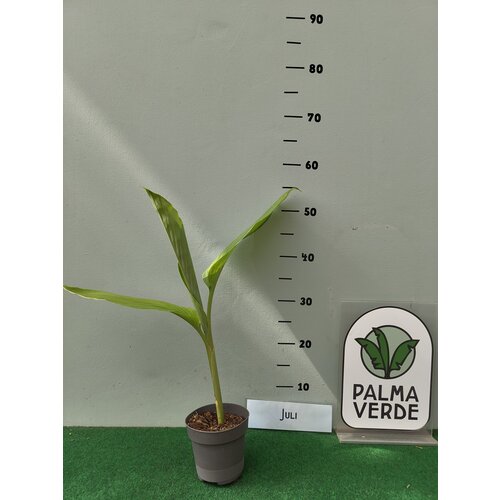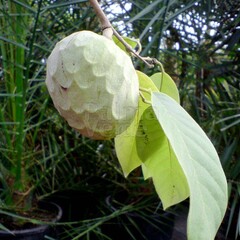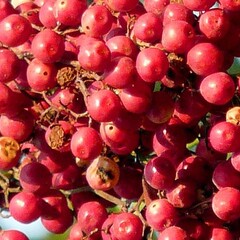Curcuma longa is also known under the names Turmeric and also called koenjit or Indian yellow root. This medicinal plant belongs to the family of the Zingiberaceae or ginger-like.
The kurmuma can also be kept in house as a houseplant.
In the autumn appear white and sometimes pink flowers which smell good, they have a diameter of more than 5 cm.
The leaf is more than 40 cm long and 20 cm wide.
Turmeric is best known for its turmeric root, which is used for many applications in the kitchen, as fresh as in powder form.
Turmeric is widely used in Asia as a component of curry, the root extract also causes a yellow discoloration of the dishes.
It is nice to bake a piece of fresh carrot with a stir-fry dish.
Furthermore, research has shown that turmeric has a beneficial effect and anti-inflammatory effect for the treatment of all sorts of wounds.
In Asia, Alzheimer's and Parkinson's are much less prevalent than in the West, and this is associated with the use of the Curcuma longa root in dishes.
A wet spot in the winter is not favorable for the root and there is the chance that this rot, well-drained soil is an advantage.
We prefer to keep the plants in a pot, hibernate in a cool place is sufficient so that the turmeric comes in winter rest.
The foliage disappears from October / November and only the tuber remains, it runs out in the spring around the end of May when the weather starts to get warmer.
We deliver this plant in a pot but from the end of October until the end of May we do not have any leaves.
Winter hardiness zone 9a (-6 / -8ºC).



























